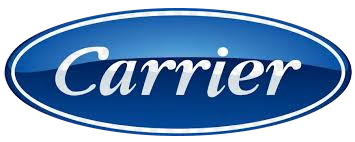
Embracing A2L Refrigerants: The Future of Eco-Friendly Cooling Solutions with Beachside Air Conditioning
Introduction to A2L Refrigerants
As the world becomes more environmentally conscious, advancements in technology are essential to reducing our carbon footprint. One such advancement is the introduction of A2L refrigerants in the HVAC industry. At Beachside Air Conditioning, we understand the importance of staying up-to-date with these changes to offer our customers the best, most efficient, and environmentally friendly solutions. A2L refrigerants are low-GWP (Global Warming Potential) refrigerants that have been classified as mildly flammable. Despite their flammability, they offer a range of benefits, from reduced environmental impact to maintaining energy efficiency.
In this article, we will explore what A2L refrigerants are, their characteristics, benefits, and challenges, as well as the regulatory landscape that has paved the way for their use. Understanding these new refrigerants is crucial for both homeowners and businesses as the industry moves toward greener solutions.
What Are Refrigerants?
Refrigerants are the core substances used in air conditioning and refrigeration systems to transfer heat. The basic principle involves the refrigerant transitioning between liquid and gas phases to absorb and release heat, keeping your space cool. These substances are usually made up of elements like hydrogen, chlorine, fluorine, and carbon. Traditional refrigerants have been highly effective at cooling but are also notorious for their negative environmental impact, contributing to both ozone depletion and global warming.
The shift towards low-GWP refrigerants like A2L is driven by regulatory changes aimed at reducing the environmental footprint of cooling systems, while still delivering the same, if not better, performance.
Regulatory Changes Driving A2L Refrigerants
The push for A2L refrigerants has come largely from international regulatory efforts, such as the Montreal Protocol and the Paris Agreement, which focus on phasing out harmful high-GWP refrigerants like HFCs (Hydrofluorocarbons). These initiatives aim to mitigate climate change and protect the ozone layer by encouraging the use of more eco-friendly refrigerants, such as those in the A2L category. With these regulations in place, HVAC companies like Beachside Air Conditioning must stay ahead of the curve to provide solutions that comply with these global agreements, without sacrificing performance or reliability.
Key Characteristics of A2L Refrigerants
A2L refrigerants have specific traits that set them apart from their predecessors:
- Flammability: Although classified as mildly flammable, A2L refrigerants pose a much lower flammability risk compared to A3 refrigerants. This makes them a safer option while still offering environmental benefits.
- Global Warming Potential (GWP): A2L refrigerants typically have GWP values of less than 150, which significantly reduces their impact on the environment compared to older refrigerants like HFCs.
- Examples: Common A2L refrigerants include R-32, R-454B, and R-1234yf, all of which are widely used in both residential and commercial applications.
Benefits of A2L Refrigerants
Switching to A2L refrigerants comes with multiple benefits:
- Environmental Impact: A2L refrigerants help lower greenhouse gas emissions, which is crucial for slowing down the effects of global warming.
- Energy Efficiency: These refrigerants can provide comparable or even superior energy efficiency in cooling systems, ensuring that users still get the comfort they expect while using less energy.
- Compatibility: In many cases, A2L refrigerants can be used in existing HVAC systems with minimal adjustments, making the transition smoother for both technicians and property owners.
Safety Considerations
While A2L refrigerants are a significant step forward in terms of environmental sustainability, their mild flammability means that safety must be a top priority. Here are a few safety considerations to keep in mind:
- Risk Assessment: It’s crucial to have proper leak detection systems in place and to understand the flammability limits of A2L refrigerants. At Beachside Air Conditioning, we ensure that all installations adhere to the highest safety standards.
- Standards and Codes: Compliance with established standards such as ASHRAE and local building codes ensures that systems using A2L refrigerants are safe and efficient.
Common Applications of A2L Refrigerants
A2L refrigerants are incredibly versatile, making them suitable for various applications:
- Residential and Commercial HVAC: These refrigerants are ideal for air conditioning systems, offering both performance and environmental benefits.
- Refrigeration: A2L refrigerants are also used in domestic and commercial refrigeration systems, where energy efficiency and environmental impact are key concerns.
Challenges in Transitioning to A2L Refrigerants
Although A2L refrigerants present numerous benefits, transitioning to them can pose challenges. Here’s a quick overview of what to expect:
- Training: Technicians need specialized training on how to properly handle, charge, and maintain systems using A2L refrigerants. This includes new charging practices, safety protocols, and updated measurement techniques.
- System Design: In some cases, existing systems may need modifications to safely accommodate A2L refrigerants. This could involve upgrading certain components or ensuring the system is designed with A2L refrigerants in mind.
Conclusion: A2L Refrigerants and the Future of HVAC
A2L refrigerants represent the future of cooling technology, combining environmental responsibility with energy efficiency. At Beachside Air Conditioning, we’re committed to staying ahead of the curve by offering systems that utilize these advanced refrigerants, ensuring our customers enjoy both performance and peace of mind.
If you have any questions or want to learn more about transitioning to A2L refrigerants in your home or business, don’t hesitate to reach out to us at Beachside Air Conditioning today!





.png)

